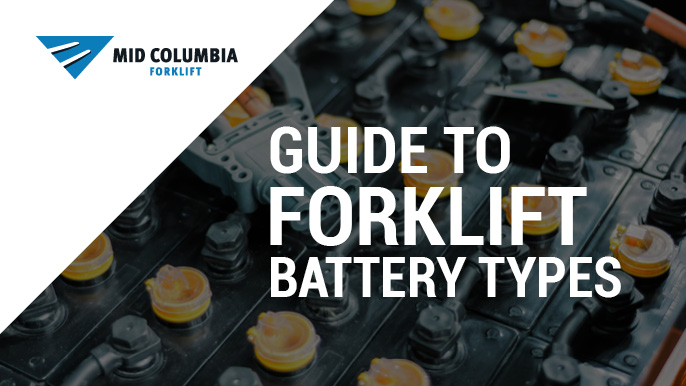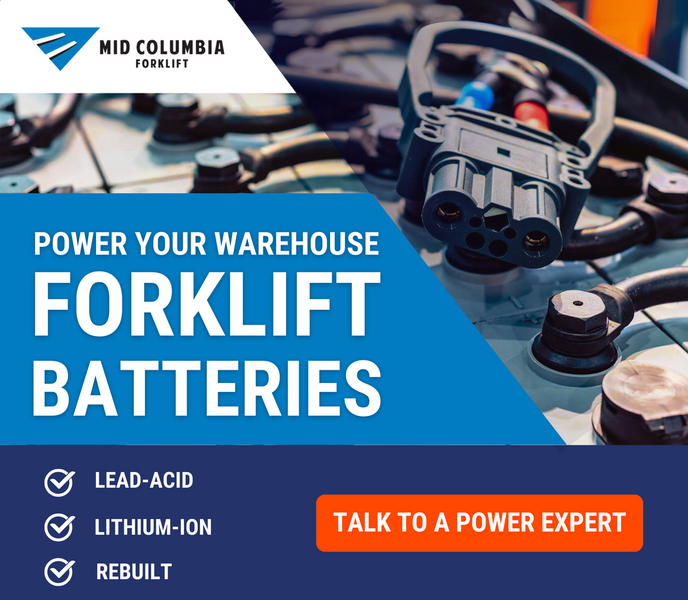Guide to Forklift Battery Types
by Phil Hanford, on January 20, 2020 at 8:00 AM

The electric forklift industry relies on a variety of battery types for power. This guide to forklift battery types covered the basics of what makes each type of battery stand out. From construction and weight to maintenance and other advantages, we will compare the following types of forklift batteries:
Lead Acid Forklift Batteries
Lead acid batteries are the most common in the forklift market. They are sometimes referred to as wet cell batteries. Components include a battery case, cells, and cables, as well as a mixture of sulfuric acid and water.
Lead acid batteries need regular maintenance for top performance. Some charging systems may need specialized electrical work to support voltage demands. Wet cell batteries also need regular watering to maintain electrolyte levels. Businesses must buy specialized watering systems to ensure levels are accurate. With the right maintenance, most lead acid forklift batteries last up to five years or more.
Absorbed Glass Mat (AGM) Forklift Batteries
Absorbed glass mat (AGM) batteries use a special glass mat to pass electrolytes between battery plates. By suspending electrolytes in this dry state, maintenance requirements decrease. AGM batteries are sometimes called maintenance-free because they need no watering. This also negates the risk of spilled battery acid in case of a cracked battery case.
The main trade-off for AGM batteries is that charge cycles can harm life and performance. They last longest and perform best when they discharge up to 50% of capacity per cycle. AGM batteries present a strong alternative to lead acid batteries. Businesses with maintenance challenges or electrical grid issues benefit from their use.
Lithium-Ion Forklift Batteries
Lithium-ion batteries are growing in popularity for forklift use. While more expensive than wet-cell batteries, they offer many benefits in comparison. They are maintenance-free, need no watering, and reduce possible risks to workers. Lithium-ion batteries also can be quick charged and have no overcharge risk. These benefits all mean workers spend less time maintaining forklift batteries.
Lithium-ion batteries can be cost-prohibitive for some businesses. They are also smaller, requiring extra forklift counterweights in the battery compartment. Lithium-ions can also suffer damage at high temperatures or if they are stored with a full charge. These challenges may mean changes to your operational strategy to protect this investment.
Still wondering about the benefits of lead acid vs lithium-ion forklift batteries? Mid-Columbia Forklift and MidCo Material Handling can help. From identifying the right battery to sourcing new equipment, we've got you covered. Our team of dedicated material handling experts is ready to help you find the right solution.
Further Reading:
Most Commonly Replaced Forklift Parts
Why You Should Outsource Your Forklift Planned Maintenance
Top Ways to Reduce Downtime in Your Warehouse




